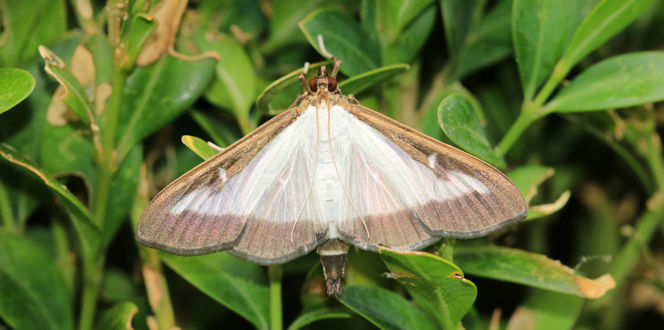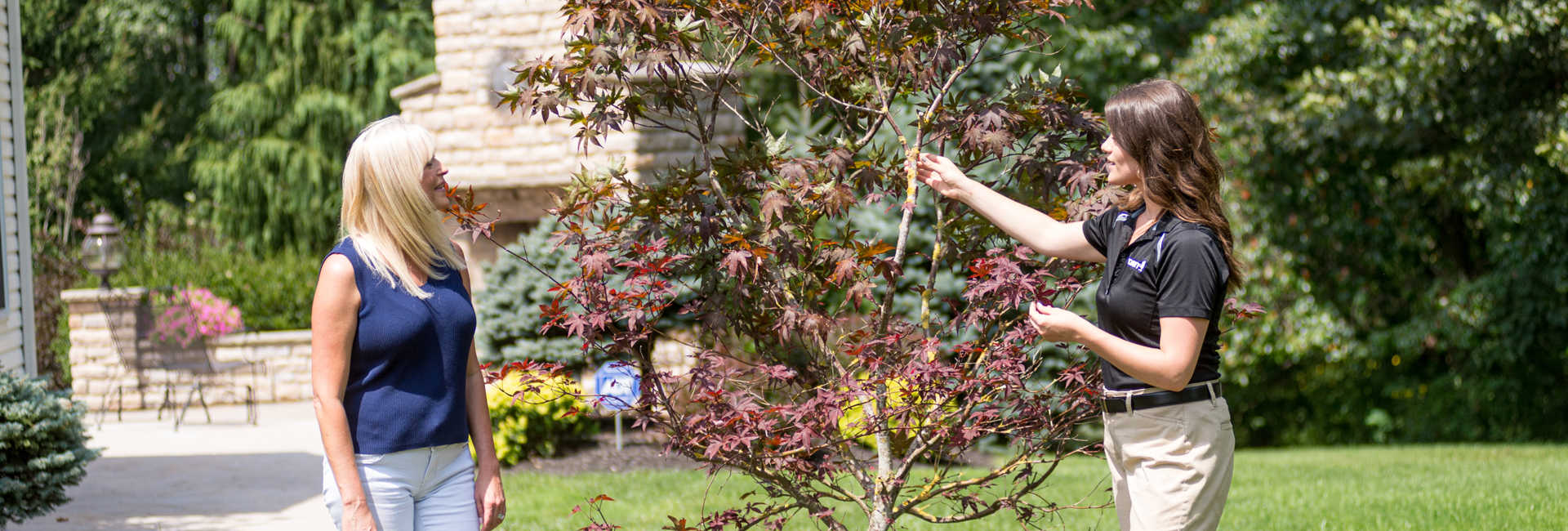Thrips Description:
Thrips are very small yellow-brown or black insects commonly found on flowers in summertime. They feed on a plants’ leaves and flowers by scraping away the epidermal cells and draining the sap. The results are a leaf surface that becomes discolored or unattractively flecked, or even a flower that does not bloom.
Hosts:
Thrips feed on woody plants, flowers, fruits and shade trees, and some of them are even predatory. Some of the most commonly impacted include: Azalea, Dogwood, Gardenia, Hibiscus, Magnolia, Maple, Viburnum, Impatiens, Chive, Fig, Iris, Rose and Gladiolus.
Biology & Symptoms:
These insects are as thin as a needle and are generally less than 5 millimeters long. Many thrips are winged. They are reluctant long-distance fliers, but do just fine from plant to plant. During a thunderstorm, thrips will take flight in droves, which is why they are also commonly known as thunderflies. Thrips are never usually found on their own; as very social creatures, they are generally found in groups. There are more than 6,000 species of thrips across the world, so the specific life cycle depends on the species of thrip, as well as the location and host plant.
Adults will overwinter in plant bark, debris or other material. In early spring, they become active and make slits in leaf tissue to lay their eggs. One female can lay up to 50 eggs at one time. The eggs hatch three to five days later, and then they feed on plant sap. Thrip nymphs mature to adulthood quickly and can reproduce within three weeks, which is how populations can build quickly. While thrips adults have short one-month lives, they can have up to 15 generations per year outdoors, keeping thrips present throughout the growing season.
The first sign of a thrips infestation on your plants is typically yellow or bleached spots on the leaves. You may also see deformed leaves or splotches on flower petals. As the infestation worsens, thrips leaf damage shows up in a silvery thin look with black spots. This is the culmination of thrips sucking the plant sap from the leaves and then leaving their excrement behind. Thrips damage on plants then advances to the stage where leaves and petals wilt, die and finally drop off of the plant.
Management:
Preventing thrips begins with keeping plants moist since thrips are usually drawn to those that are too dry. Early detection and monitoring are important. Take action only if you properly identify and detect their presence and damage. Thrips control involves the use of insecticidal soaps and low-toxicity contact insecticides. A certified arborist or landscape professional can formulate a plan and best course of action. Unfortunately, because thrip eggs are protected in plant leaves and their life cycles are brief, thrips pest control can be something you have to continue throughout the growing season.





